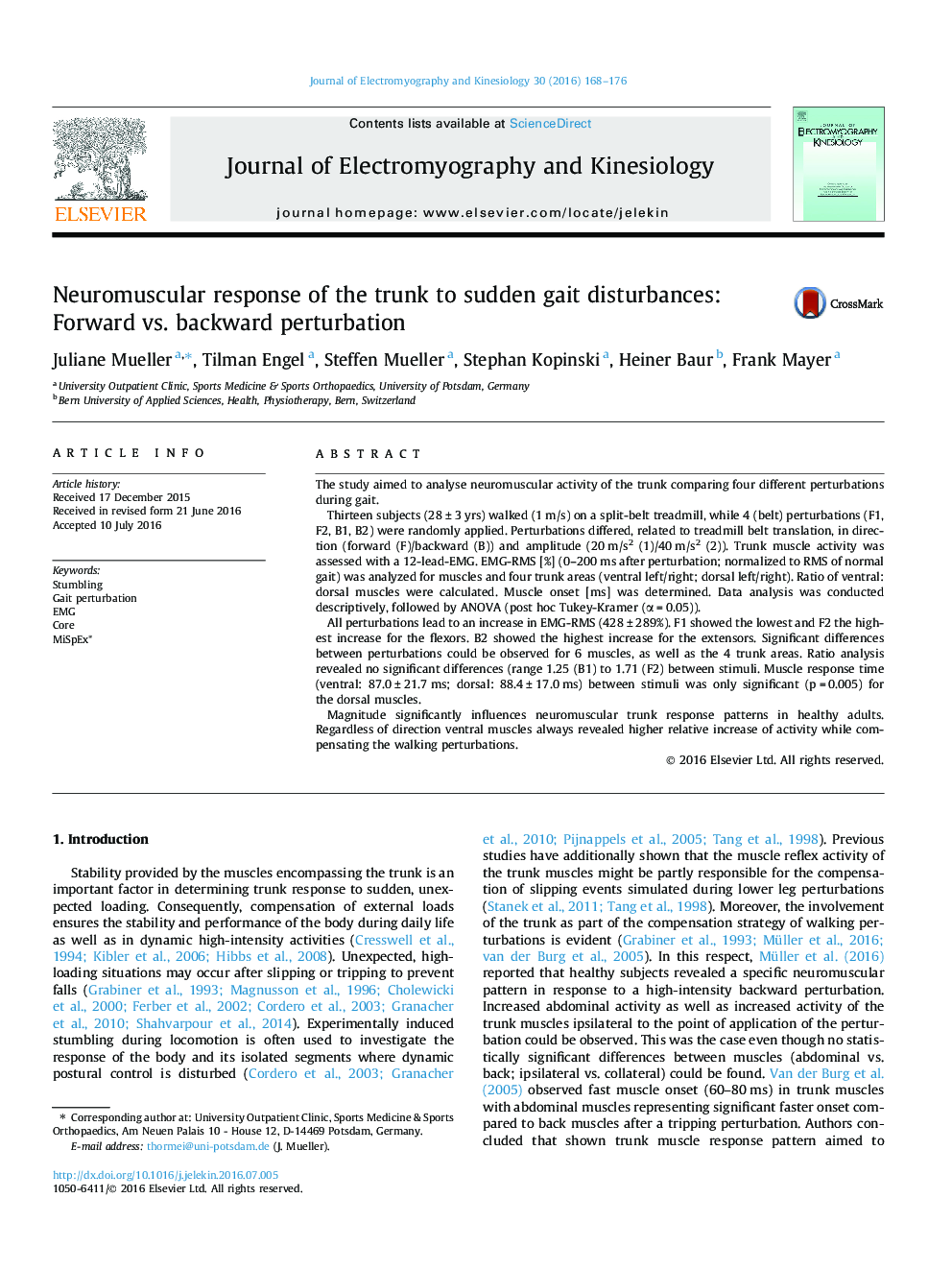| کد مقاله | کد نشریه | سال انتشار | مقاله انگلیسی | نسخه تمام متن |
|---|---|---|---|---|
| 4064373 | 1604183 | 2016 | 9 صفحه PDF | دانلود رایگان |
The study aimed to analyse neuromuscular activity of the trunk comparing four different perturbations during gait.Thirteen subjects (28 ± 3 yrs) walked (1 m/s) on a split-belt treadmill, while 4 (belt) perturbations (F1, F2, B1, B2) were randomly applied. Perturbations differed, related to treadmill belt translation, in direction (forward (F)/backward (B)) and amplitude (20 m/s2 (1)/40 m/s2 (2)). Trunk muscle activity was assessed with a 12-lead-EMG. EMG-RMS [%] (0–200 ms after perturbation; normalized to RMS of normal gait) was analyzed for muscles and four trunk areas (ventral left/right; dorsal left/right). Ratio of ventral:dorsal muscles were calculated. Muscle onset [ms] was determined. Data analysis was conducted descriptively, followed by ANOVA (post hoc Tukey-Kramer (α = 0.05)).All perturbations lead to an increase in EMG-RMS (428 ± 289%). F1 showed the lowest and F2 the highest increase for the flexors. B2 showed the highest increase for the extensors. Significant differences between perturbations could be observed for 6 muscles, as well as the 4 trunk areas. Ratio analysis revealed no significant differences (range 1.25 (B1) to 1.71 (F2) between stimuli. Muscle response time (ventral: 87.0 ± 21.7 ms; dorsal: 88.4 ± 17.0 ms) between stimuli was only significant (p = 0.005) for the dorsal muscles.Magnitude significantly influences neuromuscular trunk response patterns in healthy adults. Regardless of direction ventral muscles always revealed higher relative increase of activity while compensating the walking perturbations.
Journal: Journal of Electromyography and Kinesiology - Volume 30, October 2016, Pages 168–176
